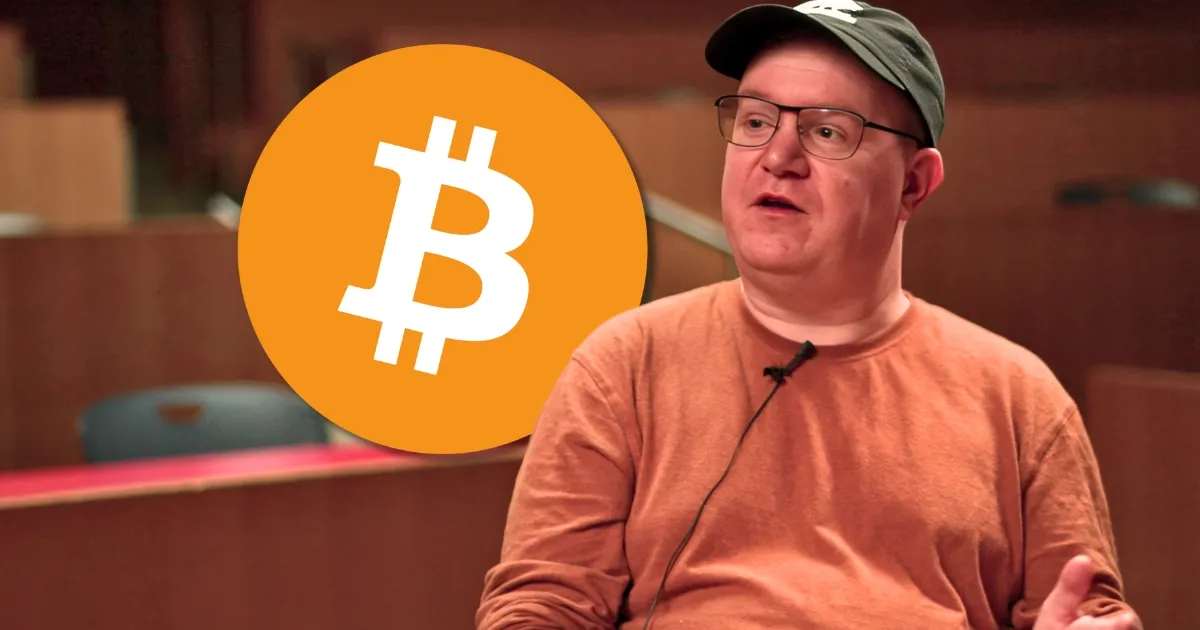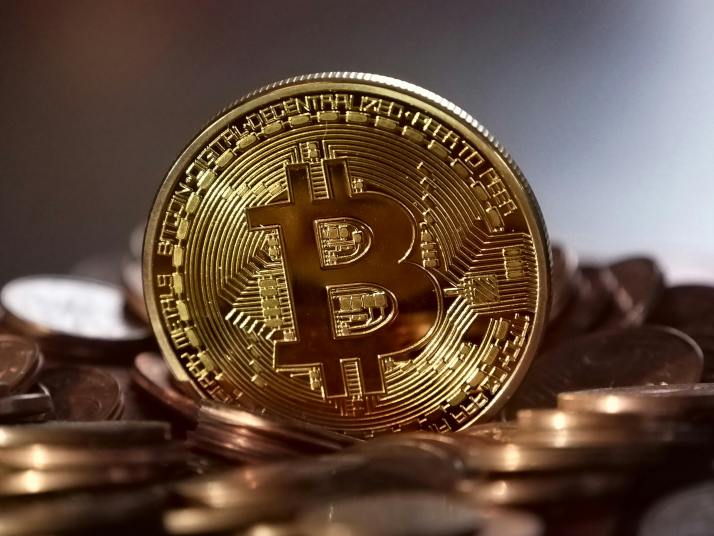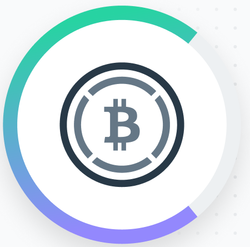

Why are refunds important in stablecoin payments?
Anyone who has used traditional payment systems will likely be familiar with refunds and chargebacks. If a purchase goes wrong, like receiving damaged items or not receiving the product at all, the payer can file a complaint with the seller to recover their funds. This process of refunds builds trust between payers and sellers, ensuring secure transactions for both sides.
However, stablecoin transactions differ significantly. Unlike credit cards or PayPal, stablecoin payments are generally irreversible. Once sent, the payment is final, with no standard way to dispute or reverse it if issues arise, which can make payers wary of using stablecoins for daily purchases.
This highlights the importance of refunds in the stablecoin ecosystem. Just as payers rely on protections with traditional payment methods, stablecoin transactions need comparable systems to inspire confidence.
Without options to dispute or reverse payments, payers may avoid stablecoins for online shopping or other transactions. A clear, reliable refund system could make stablecoin payments safer and more attractive for payers, whether purchasing digital goods, services or physical items.
Circle’s Refund Protocol, explained
Circle’s refund protocol is basically a smart contract designed to resolve payment disputes while preventing custodial control over funds. It has transformed the role of arbiter by restricting their ability to redirect funds at will or indefinitely block access.
Traditionally, an arbiter could fully control escrowed funds, including misusing or losing them. The Refund Protocol changes this by limiting the arbiter’s powers strictly to dispute resolution. Rather than making the arbiter all-powerful, the protocol entrusts the arbiter with three specific authorities:
- Set a lockup period during which the payer’s funds are securely held in escrow
- Authorize refunds to a pre-specified address provided by the payer
- Allow early fund withdrawal by the payer if they pay a mutually agreed fee to the arbiter.

The arbiter cannot send the funds to any arbitrary address, ensuring they remain non-custodial. The use of a smart contract ensures transparency, locking the process into code rather than trusting human discretion. The smart contract logs the recipient’s address, amount and refund address.
By removing full custodial rights and fixing the dispute period, the Refund Protocol protects both payers and recipients while offering a structured, tamper-proof way to handle disagreements.

Key features of Circle’s Refund Protocol
In digital payments, stablecoins like USDC (USDC) have transformed transactions by providing swift, borderless and stable payment options. But these stablecoins lack the ability to manage disputes or process refunds, which is typically expected from traditional payment systems such as credit cards. The Refund Protocol fills this void.
Here are the key features of the Refund Protocol:
- Non-custodial escrow: With the Refund Protocol, funds are never controlled by a central party. You don’t need to trust any single entity with your funds. Instead, the smart contract itself ensures that funds are only released when the conditions are met. This creates a more secure and trustworthy system for both payers and sellers.
- Mediation by an arbiter: If a dispute arises, the Refund Protocol employs an arbiter who works as a neutral mediator to settle conflicts without centralization or excessive authority. The arbiter’s role is to facilitate dispute resolution, not to manage the funds. If the payer and the seller cannot resolve the issue, the arbiter can make a final ruling, but they cannot arbitrarily access or control the funds.
- Lockup periods: To allow both parties time to address issues, the Refund Protocol incorporates lockup periods. During this period, funds stay in escrow, giving both sides an opportunity for negotiation or dispute resolution before funds are transferred to the payer. This ensures the payment isn’t immediately lost to fraud or mistakes.
- Early withdrawals: If the seller needs access to funds before the lockup period concludes, the Refund Protocol permits early withdrawals. But this is subject to a fee and requires consent from both the payer and the arbiter. Early withdrawals offer flexibility, enabling quicker access to funds if both parties agree on the conditions.
- Composability and transparency: A standout feature of the Refund Protocol is its composability, designed to integrate effortlessly with other blockchain-based applications. All transactions are logged on the blockchain, allowing the payer to monitor their funds’ status and maintain a clear record if a dispute occurs.
Did you know? The Refund Protocol is built to work with USDC and can be integrated into merchant platforms, wallets or payment services. This opens doors to mainstream e-commerce use cases, where stablecoin refunds become as seamless as traditional card chargebacks.
How Circle’s Refund Protocol works
With Circle’s Refund Protocol, the payer no longer needs to avoid USDC payments, fearing an irreversible payment. It offers a transparent, decentralized and clear method to resolve disputes, ensuring funds’ safety.
Here is how the refund protocol works:
- The payment: When the payer makes a payment, funds aren’t instantly transferred to the seller. The protocol’s smart contract holds the funds in escrow, showing the payment as initiated but pausing the transfer until conditions are fulfilled.
- The refund: If an issue occurs post-payment, such as non-delivery of service or products, the payer can request a refund from escrow if the supplier agrees. But if the seller doesn’t consent, they can escalate the matter to the arbiter for a resolution.
- The withdrawal: After the lockup period, if no disputes arise, the seller can withdraw funds without arbiter involvement. The decentralized, non-custodial system would only hold funds when needed.
- Early withdrawal: If the seller needs funds sooner, they can request early withdrawal. This feature includes a fee the arbiter determines and must be mutually agreed upon with the payer. To prevent arbitrary charges, the recipient must sign off on the terms before the withdrawal can happen.
Did you know? The protocol predefines refund addresses at the time of payment. This means that even if disputes arise, arbiters can’t redirect funds elsewhere. It’s a privacy-preserving and fraud-resistant design that limits trust assumptions while still allowing dispute mediation.
Benefits of the Refund Protocol
Refund Protocol transforms stablecoin transactions by prioritizing security, transparency and user autonomy. It delivers a cost-effective, decentralized framework that enhances trust and usability for everyday payments.
Here are some benefits of the Refund Protocol:
- Non-custodial system: The Refund Protocol ensures funds remain free from centralized control and, subsequently, arbitrary decision-making. This mechanism boosts trust as the payers don’t need to rely on any single entity. The smart contract ensures automated release of funds when conditions are met, fostering a secure, trustworthy environment for both payers and sellers.
- Transparent dispute resolution: A key advantage of the Refund Protocol is a transparent dispute resolution process. If an issue arises, an arbiter resolves it. As all transactions are onchain, both payers and buyers can monitor dispute progress anytime.
- Flexibility and control: The payer can designate a refund address in advance, setting payment terms. A seller may withdraw funds early, though with a fee. These features provide greater control over fund handling, which becomes especially useful for uses like e-commerce.
- Lower costs: By eliminating intermediaries like banks or payment processors, the Refund Protocol cuts transaction fees. This makes stablecoin payments a cost-effective option, particularly for cross-border transfers where traditional methods are slow and expensive.
- Greater stablecoin adoption: The Refund Protocol has overcome a significant hurdle to stablecoin use — the lack of trust. Its transparent, fair dispute resolution encourages more businesses and consumers to adopt stablecoins.
Did you know? Circle’s Refund Protocol helps bridge the trust gap in crypto commerce by mimicking familiar Web2 refund experiences but in a decentralized way. It demonstrates how programmable money can unlock new consumer protection forms without sacrificing blockchain’s permissionless ethos.
Challenges concerning the Refund Protocol
The Refund Protocol faces hurdles in achieving widespread adoption and seamless functionality. Addressing these challenges is crucial for its scalability and integration into global payment systems.
Here are the challenges the Refund Protocol is facing:
- Adoption by wallet providers: For the Refund Protocol to work smoothly, wallet providers must integrate it with the wallet. If a wallet doesn’t support specifying refund addresses or interacting with the Refund Protocol smart contract, both the payers and the sellers may not be able to use the full range of features.
- Gas costs and scalability: The Refund Protocol requires multiple interactions with the blockchain — payment deposits, withdrawals and dispute resolutions — each of which can incur gas costs. As the number of transactions grows, the fee may become prohibitive, particularly in high-volume applications.
- Legal and regulatory considerations: As stablecoins become more widely adopted, there may be legal and regulatory challenges regarding the enforceability of the protocol. The role of the arbiter in dispute resolution may need clarification under various jurisdictions, which could impact the global use of the protocol.
- Malicious arbiters: While the Refund Protocol minimizes the power of the arbiter, there is still the probability of misuse. A malicious arbiter could approve a refund that isn’t justified, leading to unfair outcomes. To mitigate this risk, auditing mechanisms and reputation systems could help ensure that arbiters act fairly and responsibly.
- Integration with traditional payment systems: As stablecoins gain popularity, there will likely be challenges in integrating them with traditional fiat-based systems. Most consumers are still accustomed to using credit cards or other payment methods, so ensuring that the Refund Protocol works seamlessly with both stablecoins and fiat currencies is a key challenge for the future.
Why are refunds important in stablecoin payments? Anyone who has used traditional payment systems will likely be familiar with refunds and chargebacks. If a purchase goes wrong, like receiving damaged items or not receiving the product at all, the payer can file a complaint with the seller to recover their funds. This process of refunds builds trust between payers and sellers, ensuring secure transactions for both sides.However, stablecoin transactions differ significantly. Unlike credit cards or PayPal, stablecoin payments are generally irreversible. Once sent, the payment is final, with no standard way to dispute or reverse it if issues arise, which can make payers wary of using stablecoins for daily purchases.This highlights the importance of refunds in the stablecoin ecosystem. Just as payers rely on protections with traditional payment methods, stablecoin transactions need comparable systems to inspire confidence. Without options to dispute or reverse payments, payers may avoid stablecoins for online shopping or other transactions. A clear, reliable refund system could make stablecoin payments safer and more attractive for payers, whether purchasing digital goods, services or physical items. Circle’s Refund Protocol, explained Circle’s refund protocol is basically a smart contract designed to resolve payment disputes while preventing custodial control over funds. It has transformed the role of arbiter by restricting their ability to redirect funds at will or indefinitely block access.Traditionally, an arbiter could fully control escrowed funds, including misusing or losing them. The Refund Protocol changes this by limiting the arbiter’s powers strictly to dispute resolution. Rather than making the arbiter all-powerful, the protocol entrusts the arbiter with three specific authorities:Set a lockup period during which the payer’s funds are securely held in escrowAuthorize refunds to a pre-specified address provided by the payerAllow early fund withdrawal by the payer if they pay a mutually agreed fee to the arbiter.The arbiter cannot send the funds to any arbitrary address, ensuring they remain non-custodial. The use of a smart contract ensures transparency, locking the process into code rather than trusting human discretion. The smart contract logs the recipient’s address, amount and refund address. By removing full custodial rights and fixing the dispute period, the Refund Protocol protects both payers and recipients while offering a structured, tamper-proof way to handle disagreements. Key features of Circle’s Refund Protocol In digital payments, stablecoins like USDC (USDC) have transformed transactions by providing swift, borderless and stable payment options. But these stablecoins lack the ability to manage disputes or process refunds, which is typically expected from traditional payment systems such as credit cards. The Refund Protocol fills this void.Here are the key features of the Refund Protocol:Non-custodial escrow: With the Refund Protocol, funds are never controlled by a central party. You don’t need to trust any single entity with your funds. Instead, the smart contract itself ensures that funds are only released when the conditions are met. This creates a more secure and trustworthy system for both payers and sellers.Mediation by an arbiter: If a dispute arises, the Refund Protocol employs an arbiter who works as a neutral mediator to settle conflicts without centralization or excessive authority. The arbiter’s role is to facilitate dispute resolution, not to manage the funds. If the payer and the seller cannot resolve the issue, the arbiter can make a final ruling, but they cannot arbitrarily access or control the funds. Lockup periods: To allow both parties time to address issues, the Refund Protocol incorporates lockup periods. During this period, funds stay in escrow, giving both sides an opportunity for negotiation or dispute resolution before funds are transferred to the payer. This ensures the payment isn’t immediately lost to fraud or mistakes.Early withdrawals: If the seller needs access to funds before the lockup period concludes, the Refund Protocol permits early withdrawals. But this is subject to a fee and requires consent from both the payer and the arbiter. Early withdrawals offer flexibility, enabling quicker access to funds if both parties agree on the conditions.Composability and transparency: A standout feature of the Refund Protocol is its composability, designed to integrate effortlessly with other blockchain-based applications. All transactions are logged on the blockchain, allowing the payer to monitor their funds’ status and maintain a clear record if a dispute occurs.Did you know? The Refund Protocol is built to work with USDC and can be integrated into merchant platforms, wallets or payment services. This opens doors to mainstream e-commerce use cases, where stablecoin refunds become as seamless as traditional card chargebacks. How Circle’s Refund Protocol works With Circle’s Refund Protocol, the payer no longer needs to avoid USDC payments, fearing an irreversible payment. It offers a transparent, decentralized and clear method to resolve disputes, ensuring funds’ safety. Here is how the refund protocol works:The payment: When the payer makes a payment, funds aren’t instantly transferred to the seller. The protocol’s smart contract holds the funds in escrow, showing the payment as initiated but pausing the transfer until conditions are fulfilled.The refund: If an issue occurs post-payment, such as non-delivery of service or products, the payer can request a refund from escrow if the supplier agrees. But if the seller doesn’t consent, they can escalate the matter to the arbiter for a resolution.The withdrawal: After the lockup period, if no disputes arise, the seller can withdraw funds without arbiter involvement. The decentralized, non-custodial system would only hold funds when needed.Early withdrawal: If the seller needs funds sooner, they can request early withdrawal. This feature includes a fee the arbiter determines and must be mutually agreed upon with the payer. To prevent arbitrary charges, the recipient must sign off on the terms before the withdrawal can happen.Did you know? The protocol predefines refund addresses at the time of payment. This means that even if disputes arise, arbiters can’t redirect funds elsewhere. It’s a privacy-preserving and fraud-resistant design that limits trust assumptions while still allowing dispute mediation. Benefits of the Refund Protocol Refund Protocol transforms stablecoin transactions by prioritizing security, transparency and user autonomy. It delivers a cost-effective, decentralized framework that enhances trust and usability for everyday payments.Here are some benefits of the Refund Protocol:Non-custodial system: The Refund Protocol ensures funds remain free from centralized control and, subsequently, arbitrary decision-making. This mechanism boosts trust as the payers don’t need to rely on any single entity. The smart contract ensures automated release of funds when conditions are met, fostering a secure, trustworthy environment for both payers and sellers.Transparent dispute resolution: A key advantage of the Refund Protocol is a transparent dispute resolution process. If an issue arises, an arbiter resolves it. As all transactions are onchain, both payers and buyers can monitor dispute progress anytime. Flexibility and control: The payer can designate a refund address in advance, setting payment terms. A seller may withdraw funds early, though with a fee. These features provide greater control over fund handling, which becomes especially useful for uses like e-commerce.Lower costs: By eliminating intermediaries like banks or payment processors, the Refund Protocol cuts transaction fees. This makes stablecoin payments a cost-effective option, particularly for cross-border transfers where traditional methods are slow and expensive.Greater stablecoin adoption: The Refund Protocol has overcome a significant hurdle to stablecoin use — the lack of trust. Its transparent, fair dispute resolution encourages more businesses and consumers to adopt stablecoins.Did you know? Circle’s Refund Protocol helps bridge the trust gap in crypto commerce by mimicking familiar Web2 refund experiences but in a decentralized way. It demonstrates how programmable money can unlock new consumer protection forms without sacrificing blockchain’s permissionless ethos. Challenges concerning the Refund Protocol The Refund Protocol faces hurdles in achieving widespread adoption and seamless functionality. Addressing these challenges is crucial for its scalability and integration into global payment systems.Here are the challenges the Refund Protocol is facing:Adoption by wallet providers: For the Refund Protocol to work smoothly, wallet providers must integrate it with the wallet. If a wallet doesn’t support specifying refund addresses or interacting with the Refund Protocol smart contract, both the payers and the sellers may not be able to use the full range of features. Gas costs and scalability: The Refund Protocol requires multiple interactions with the blockchain — payment deposits, withdrawals and dispute resolutions — each of which can incur gas costs. As the number of transactions grows, the fee may become prohibitive, particularly in high-volume applications. Legal and regulatory considerations: As stablecoins become more widely adopted, there may be legal and regulatory challenges regarding the enforceability of the protocol. The role of the arbiter in dispute resolution may need clarification under various jurisdictions, which could impact the global use of the protocol.Malicious arbiters: While the Refund Protocol minimizes the power of the arbiter, there is still the probability of misuse. A malicious arbiter could approve a refund that isn’t justified, leading to unfair outcomes. To mitigate this risk, auditing mechanisms and reputation systems could help ensure that arbiters act fairly and responsibly.Integration with traditional payment systems: As stablecoins gain popularity, there will likely be challenges in integrating them with traditional fiat-based systems. Most consumers are still accustomed to using credit cards or other payment methods, so ensuring that the Refund Protocol works seamlessly with both stablecoins and fiat currencies is a key challenge for the future. Refund Protocol, Circle, stablecoin, payments Cointelegraph.com News

















































































































